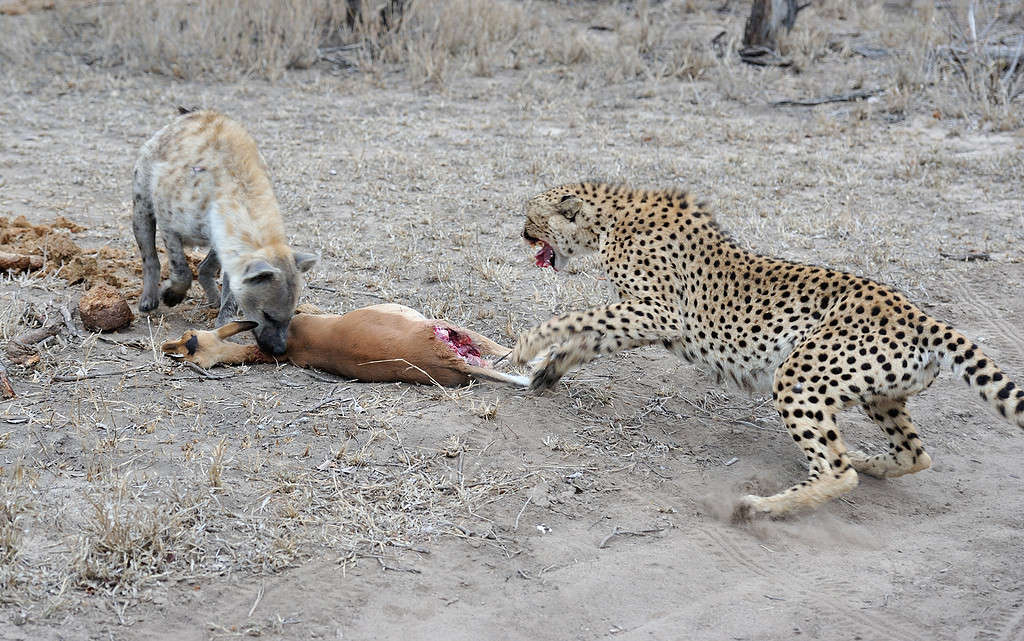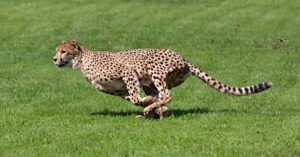This cheetah is feeling very protective of its kill! Even though the mongoose is much smaller and would not need a lot of food to keep it happy, the big cat has no intention of dividing up this carcass. In this incredible clip filmed in Botswana, a mongoose tentatively edges forward towards the prey – probably attracted by the smell and sounds. The cheetah immediately notices it and has no hesitation in chasing it away! The mongoose will have to look elsewhere for a meal.
Watch the Action Now
Do Cheetahs Normally Get Their Prey Stolen?

Hyenas often follow cheetahs at a safe distance, hoping they’ll be able to steal a kill.
©mit4711/iStock via Getty Images
Yes! It is not unusual for cheetahs to get their prey stolen from them. However, it is usually by larger animals than a mongoose. The main culprits are lions and hyenas. A cheetah would have to relinquish its kill to a lion as they are larger and more powerful cats. Also, hyenas work as a group to overcome a single cheetah. Baboons, leopards, jackals, and vultures are other animals that will try to obtain a cheetah’s kill.
What Do Cheetahs Normally Hunt?
Cheetahs normally target ungulates, which are animals with hooves. On top of their list of prey, you will often find Thompson’s gazelles, impalas, warthogs, wildebeests, and ostriches. They feed on their prey by cutting it open with their teeth, and they eat the limbs, back, and neck first. This is where the larger, protein-rich muscles are, meaning they get the maximum nutritional benefit from the carcass before it is stolen from them. There is no point in saving the best until last if another animal will get the benefit. They do not usually eat the skin or bone; they leave this for scavengers to finish. Mongooses often eat insects but are willing to scavenge if it means an easy meal.
Where Do Cheetahs Normally Live?
Cheetahs live in Iran and Africa. The largest free-range population is in Namibia. There is a possibility some are left in Egypt but are extinct from India. Their preferred habitat is open country with bush and savanna woodlands. They do well in regions with cover because this helps them stay hidden when stalking prey. If there is no cover, they struggle to hunt effectively. In Iran, they successfully survive extreme temperature changes. It can vary from 00 C to 450C in this location!
The photo featured at the top of this post is © paulafrench/iStock via Getty Images
Thank you for reading! Have some feedback for us? Contact the AZ Animals editorial team.







